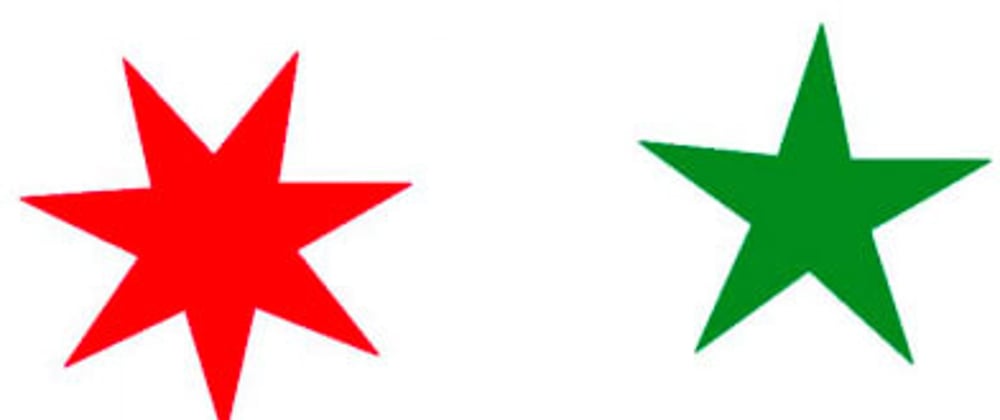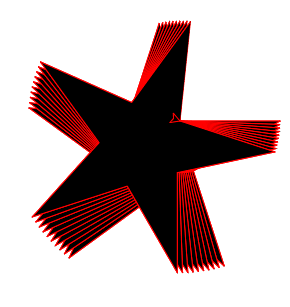I overdid things a little when trying to teach 6th graders how to draw a star using Python Turtle. But I thought that it was fun anyways so I'm sharing it here.
Note that this is also my first dev.to article. I appreciate any suggestion.
Start with a zig zag
A zig-zag can be simple to explain. We just have to move the cursor left then right over and over
import turtle as t
angle=150
side=100
angle_left=angle
angle_right=angle
t.forward(side)
t.right(angle_right)
t.forward(side)
t.left(angle_left)
t.forward(side)
t.right(angle_right)
t.forward(side)
t.left(angle_left)
t.forward(side)
t.right(angle_right)
t.forward(side)
t.left(angle_left)
Here's what we get
As we have repeating code we want to use a loop to reduce the code
import turtle as t
angle=150
side=100
pointies = 10
angle_left=angle
angle_right=angle
for p in range(pointies):
t.forward(side)
t.right(angle_right)
t.forward(side)
t.left(angle_left)
Above we can change the value of pointies = 10 to change the number of zig zags
Rotate the zig zag
What happens if we rotate the zig zag by a certain value
import turtle as t
angle=150
side=100
pointies = 10
ROTATION = 30
angle_left=angle
angle_right=angle
for p in range(pointies):
t.forward(side)
t.right(angle_right)
t.forward(side)
t.left(angle_left)
t.right(ROTATION)
All we did above was added this statement t.right(ROTATION). We also said ROTATION = 30
and here's what we get
But wouldn't it be nice if the ends were connected? To achieve this we just need to set rotation to ROTATION = 360/pointies. Remember that 360 degrees is a full rotation.
import turtle as t
angle=150
side=100
pointies = 10
ROTATION = 360/pointies
angle_left=angle
angle_right=angle
for p in range(pointies):
t.forward(side)
t.right(angle_right)
t.forward(side)
t.left(angle_left)
t.right(ROTATION)
The result:
Color the star
To color the star we first set the color using t.color("red","red"). We then use the begin_fill and end_fill commands to start and stop filling the area. Here's it is:
import turtle as t
t.speed(0)
angle=150
side=100
pointies = 10
ROTATION = 360/pointies
angle_left=angle
angle_right=angle
t.color("black","red")
t.begin_fill()
for p in range(pointies):
t.forward(side)
t.right(angle_right)
t.forward(side)
t.left(angle_left)
t.right(ROTATION)
t.end_fill()
In the code above we have also added a statement t.speed(0) to speed things up
We can now draw stars with any number of points of any color. Here are some examples:
Rotate the star
Why stop at drawing a star when we can rotate it! To do this we use a nested for-loop. This means a loop inside a loop
import turtle as t
t.speed(0)
angle=150
side=100
pointies = 5
ROTATION = 360/pointies
angle_left=angle
angle_right=angle
t.color("red","black")
for r in range(10):
t.begin_fill()
for p in range(pointies):
t.forward(side)
t.right(angle_right)
t.forward(side)
t.left(angle_left)
t.right(ROTATION)
t.end_fill()
t.right(2)
In the code above we added an extra loop that runs 10 times - for r in range(10):. We have also added a t.right(2) to the end of the loop to make the turtle rotate slightly everytime the inner loop completes
Check it out:













Latest comments (0)